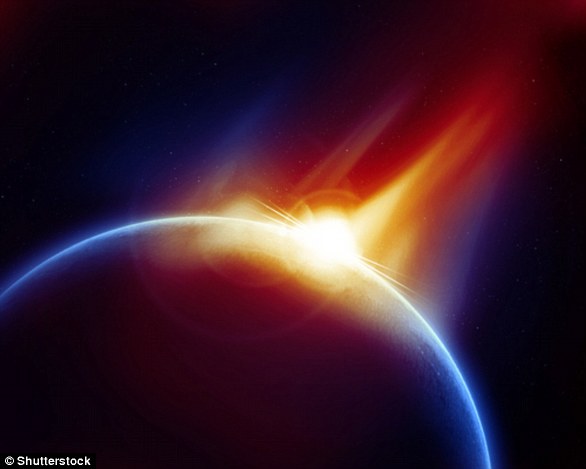Of the thousands of space rocks whizzing through the solar system, there is one that has astronomers more worried than any other.
Astronomers predict that the 500-metre-wide asteroid Bennu has a one in 2,700 chance of hitting the planet in 2182 – similar odds to flipping a coin 11 times and getting the same outcome each time.
While the chances of an impact are slim, a terrifying new simulation has revealed exactly what would happen if this deadly asteroid crashed into Earth.
Researchers found that, in addition to a huge blast triggering earthquakes and tsunamis, Bennu’s impact would kick up enough dust to trigger a two-year-long ‘impact winter’.
Using a supercomputer and cutting-edge climate simulations, researchers from Pusan National University in South Korea predicted what would happen as Bennu injected millions of tonnes of dust into the atmosphere.
As dust blocks out light from the sun, the world would become cold and dry with temperatures falling 4˚C (7.2˚F) and global rainfall reducing by 15 per cent.
In some areas, including North America, precipitation would plummet between 30 and 60 per cent, making it nearly impossible to grow crops.
Lead author Dr Lan Dai, says: ‘This would likely cause massive disruptions in global food security.’
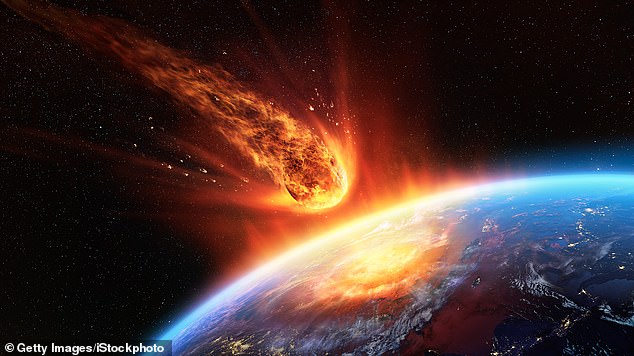
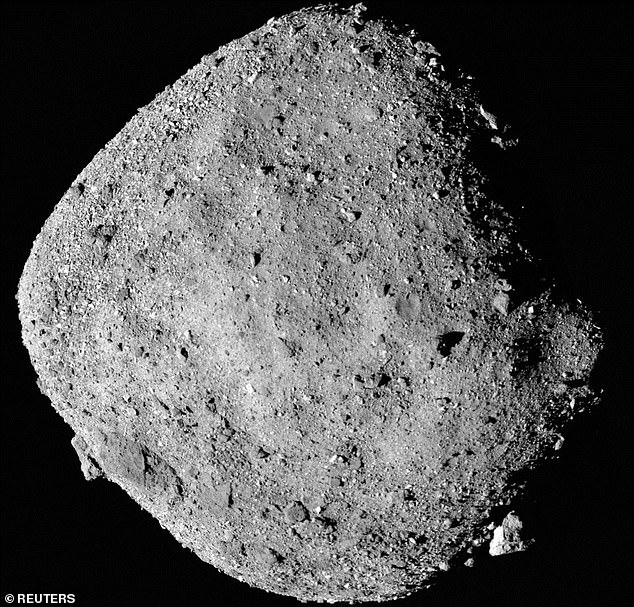
Unlike the Chicxulub asteroid that wiped out the dinosaurs, a collision with Bennu wouldn’t necessarily trigger a mass extinction event.
Asteroids the size of Bennu are believed to hit Earth every 100,000-200,000 years, so it is likely that our early ancestors have already survived one of these impacts.
But what both Chicxulub and Bennu’s impact would have in common is the massive disruption of global climate patterns.
Just like the theorised ‘nuclear winter’ that would follow a thermonuclear war, the explosion of an asteroid impact would eject a vast column of dust into the atmosphere.
If Bennu hit Earth, Dr Dai and his co-authors estimate that 100 to 400 million tonnes of dust would linger above Earth for around two years.
Those dust particles would act like a vast planet-wide umbrella, shading Earth from the sun’s radiation and reflecting heat energy back out into space.
At its peak, the amount of shortwave radiation reaching Earth would fall by 28 per cent in the worst-case scenario.
Likewise, global temperature averages would fall by 1.6°C (2.9°F), 2.7°C (4.9°F), 3.4°C (3.1°F), and 4.0°C (7.2˚F) for dust injections of 100, 200, 300, and 400 million tonnes of dust respectively.


Eurasia and North America would experience the most severe and rapid cooling as the dust concentrates in the northern hemisphere during the winter.
The simulation shows that global cooling will persist for up to four years after the impact, with a slow recovery starting after 24 months.
In the worst-case scenario, the rapid ‘impact winter’ would be equivalent to the disastrous global cooling caused by the Toba eruption which occurred around 74,000 years ago.
Believed to be the worst natural disaster in the past 2.5 million years, the Toba supervolcano triggered a six-year winter which led to mass die-offs and the near extinction of the human species.
Additionally, the researchers predict that the disruption to patterns of evaporation over the oceans will lead to ‘massive drying’ in many parts of the world.
Six months after the impact, global mean precipitation will be 0.46mm per day less, a reduction of around 15 per cent.
However, this will be accompanied by large increases in precipitation in some areas of the subtropics and severe droughts in others.
To make matters worse, the Bennu dust cloud would also cause rapid erosion of the ozone layer as radiation and heat become trapped in the upper atmosphere.


The researchers predict that the global ozone column could be depleted by 32 per cent.
Although it would be offset by the blanketing dust, this could lead to dangerous increases in levels of UV radiation which causes sunburns, blindness, and cancer.
In their paper, published in Science Advances, the researchers say these changes would ‘severely reduce the habitat suitability for humans’.
Dr Dai says: ‘The abrupt “impact winter” would provide unfavourable climate conditions for plants to grow, leading to an initial 20–30 per cent reduction of photosynthesis in terrestrial and marine ecosystems.’
During the first summer after the impact, the rate at which ecosystems grow and store biomass, known as net primary productivity, would fall by 36 per cent on land and 25 per cent in the oceans.
Meanwhile, crop yields in East Asia could fall by as much as 50 per cent, potentially triggering widespread starvation.
However, some of Earth’s ecosystems could actually stand to benefit from such a disaster.
Although they initially take a hit, the simulation shows that marine ecosystems would not only survive but thrive in the years after the impact.
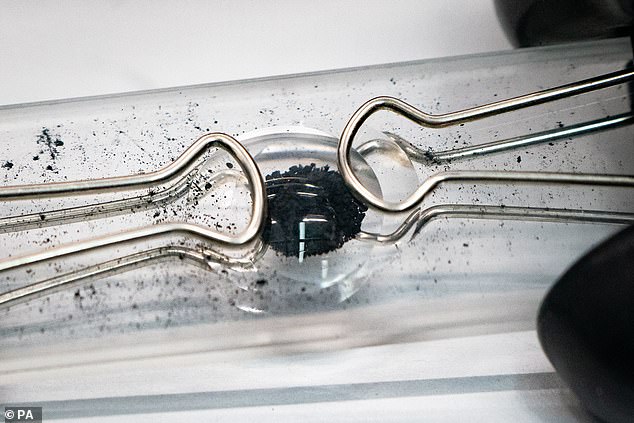
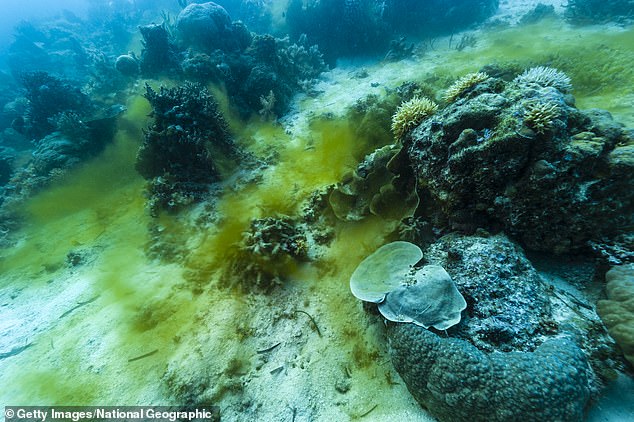
After just six months, plankton in the ocean would have already recovered and would continue to increase to levels not even seen under normal climate conditions.
This unexpected bloom would be caused by a high proportion of iron in the asteroid’s dust.
Iron is a key nutrient for plankton’s growth but many areas such as the Southern Ocean and the eastern tropical Pacific are naturally iron-poor.
As the dust from the asteroid settles it would trigger a bloom of photosynthesising diatoms which in turn would attract zooplankton, small predators which feed on the diatoms.
‘The simulated excessive phytoplankton and zooplankton blooms might be a blessing for the biosphere and may help alleviate emerging food insecurity related to the longer-lasting reduction in terrestrial productivity,’ says Dai.

